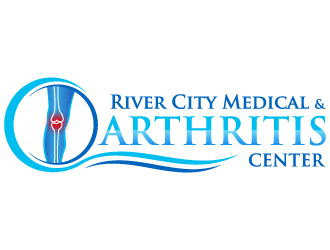Gout/Pseudogout




These diseases are characterized by acute or chronic arthritis due to deposits of crystals in and around joints. The deposition of monosodium urate crystals leads to acute gout and chronic tophaceous gout. The deposition of calcium pyrophosphate dehydrates (CPPD) crystals leads to pseudogout, also known as chondrocalcinosis. These conditions are among the most common causes of inflammatory arthritis. Identification of crystals in synovial fluid is the key to the correct diagnosis.
Gout is a disease caused by too much uric acid in your body. Uric acid can be deposited in various sites in the body including joints. Too much uric acid may not cause symptoms for years. But after time, the accumulation of deposits may cause painful joint inflammation (arthritis).
Most people who have gout are middle-aged men, but it can occur at any age. Only 5 to 10% of cases of gout occur in women, usually after menopause.
The pain of acute gout is often extreme, especially in the first few episodes. The initial episodes frequently involve a single joint, usually the big toe. This can interrupt sleep, prevent walking and interfere with work and leisure. With the passage of time, recurrent acute arthritis may involve multiple sites including the knees and the joints in the upper extremity.
When recurrent acute gout goes untreated and when there is a failure to eradicate causative factors the condition may evolve. The patient may no longer just have sporadic arthritis attacks of only one joint but may experience repeated attacks in multiple joints with increasing frequency or even have persistent low grade joint inflammation and joint deformity. There may even be deposition of urate crystals to form visible tophi, or lumpy deposits under the skin. Swelling and deformity then become the characteristic signs, but without the intense inflammation.
Your physician may deem it necessary to aspirate fluid from an inflamed joint to demonstrate that the urate crystals are causing the problem. Also, blood and/or urine tests may be indicated to assess the degree of increased uric acid in your body. Finally, standard x-rays may be necessary to determine if joint or soft tissue damage has occurred.
The principle goal of treatment includes treating the acute attacks early and effectively. It is also important to correct factors that may contribute to increased uric acid. These include decreasing excessive alcohol use, correcting obesity or substituting diuretic therapy with another hypertension medicine. Also, ingestion of foods high in purines (precursors of uric acid), such as red meat, wine and beer need to be decreased. Finally, medications to decrease the uric acid pool in the body can be instituted.
Pseudogout is a chronic condition that results from the local overproduction of pyrophosphate in cartilage which causes the deposition of crystals of CPPD. CPPD deposition is a disease of aging. The prevalence of findings on x-rays is 10% of the population between 60 and 75 years and 30% or more of the population 80 years and older. It is not known why the body forms these crystals, but may be an abnormality in the cartilage cells or connective tissue. The cause also may be due to a genetic tendency.
Episodes of acute pseudogout occur when CPPD crystals are shed from the cartilage. This can occur after surgery, from direct trauma to the joint or from joint inflammation. It usually appears as the sudden onset of swelling, warmth and pain in one joint, typically the knee (in 50% of attacks), wrist or ankle. The degree of inflammation may be less than that seen in gout. Multiple joints may be affected and the condition may be accompanied by fever. Joint inflammation peaks on day 2 or 3 and can last form 7 to 14 days with subsequent resolution.
A chronic form of arthritis can develop with pain and deformity. This usually develops in the knees, but any joint can be affected.
It may be necessary to aspirate fluid from your joint to identify crystals to make the appropriate diagnosis. Also, standard x-rays can also show CPPD deposition, especially in the wrist and knee.
Episodes of acute pseudogout are treated in the same manner as acute gout. Aspiration of the affected joint often provides relief. Chronic arthritis is treated symptomatically with medicines to decrease the inflammatory response.
